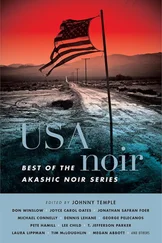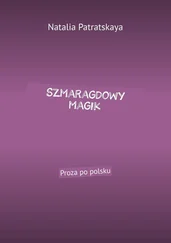MOSCOW NOIR
Edited by Natalia Smirnova & Julia Goumen

Introduction
CITY OF BROKEN DREAMS
Translated by Marian Schwartz
When we began assembling this anthology, we were dogged by the thought that Russian noir is less about the Moscow of gleaming Bentley interiors and rhinestones on long-legged blondes than it is about St. Petersburg, the empire’s former capital, whose noir atmosphere was so accurately reconstructed by Dostoevsky and Gogol. But the deeper we and the anthology’s authors delved into Moscow’s soul-chilling debris, the more vividly it arose before us in all its bleak and mystical despair. Despite its stunning outward luster, Moscow is above all a city of broken dreams and corrupted utopias, and all manner of scum oozes through the gap between fantasy and reality.
The city comprises fragments of “utterly incommensurate milieus,” notes Grigory Revzin, one of Moscow’s leading journalists, in a recent column. The word “incommensurability” truly captures the feeling you get from Moscow. The complete lack of style, the vast expanses punctuated by buildings between which lie four-century chasms—a wooden house up against a construction of steel—and all of it the result of protracted (more than 850-year) formation. Just a small settlement on the huge map of Russia in 1147, Moscow has traveled a hard path to become the monster it is now. Periods of unprecedented prosperity have alternated with years of complete oblivion.
The center of a sprawling state for nearly its entire history, Moscow has attracted diverse communities, who have come to the city in search of better lives—to work, mainly, but also to beg, to glean scraps from the tables of hard-nosed merchants, to steal and rob. The concentration of capital allowed people to tear down and rebuild ad infinitum; new structures were erected literally on the foundations of the old. Before the 1917 Revolution, buildings demolished and resurrected many times over created a favorable environment for all manner of criminal and quasi-criminal elements. After the Revolution, the ideology did not simply encourage destruction but demanded it. The Bolshevik anthem has long defined the public mentality: “We will raze this world of violence to its foundations, and then/We will build our new world: he who was nothing will become everything!”
Back to the notion of corrupted utopias: much was destroyed, but the new world remained an illusion. Those who had nothing settled in communal apartments. After people were evicted from their private homes and comfortable apartments, dozens of families settled in these spaces, whereupon a new Soviet collective existence was created. (Professor Preobrazhensky, the hero of Mikhail Bulgakov’s Heart of a Dog , happily avoided this “consolidation.” In the novel, set in post-revolutionary Moscow, the professor transplants a human pituitary gland into a dog in hopes of transforming the animal into a person. The half-man who results from this experiment immediately joins up with the Reds. The test is a failure. In Bulgakov’s opinion, he who was “nothing” could not become “everything.”) That form of survival existed in Moscow until very recently, and from the average westerner’s standpoint, nothing more oppressive could ever be devised: an existence lived publicly, in all its petty details, like in prison or a hospital.
The story of the Cathedral of Christ the Savior is a fairly graphic symbol of how Moscow was “built.” The church was constructed in the late nineteenth century on the site of a convent, which was dismantled and then blown up in 1931, on Stalin’s order, for the construction of the Palace of Soviets. The Palace of Soviets was never built (whether for technical or ideological reasons is not clear), and in its place the huge open-air Moskva Pool was dug out by 1960; it existed until the 1990s, when on the same site they began resurrecting the Cathedral of Christ the Savior, symbolizing “new Russia.”
The more you consider the history of Moscow, the more it looks like a transformer that keeps changing its face, as if at the wave of a magic wand. Take Chistye Prudy—Pure Ponds (the setting for Vladimir Tuchkov’s story in this volume)—which is now at the center of Moscow but in the seventeenth and eighteenth centuries was in the outskirts and was called “Foul” or “Dirty” Ponds. The tax on bringing livestock into Moscow was much higher than the tax on importing meat, so animals were killed just outside the city, and the innards were tossed into those ponds. One can only imagine what the place was like until it finally occurred to some prince to clean out this source of stench, and voilà! Henceforth the ponds were “clean.”
There are a great many such stories. Moscow changes rapidly as it attempts to overcome its dirt, poverty, despair, desolation, and evil; nonetheless, it so often ends up right back where it started.
A noir literary tradition does not yet really exist in Russia in general or Moscow in particular. Why? Possibly due to the censorship of czarist Russia, to say nothing of the Soviet era. In 1887, Vladimir Gilyarovsky, a writer, journalist, and great stylist of Moscow life, prepared an anthology of short sketches about Moscow’s gloomiest locales and their inhabitants, The Stories of the Slums . However, the book was not to see the light of day. The censorship committee banned the book and its pages were burned. As an aide to the main administration chief wrote in response to Gilyarovsky’s request to allow the book to go to press, “Nothing will come of your troubles… This is sheer gloom without a single glimmer, the slightest justification, nothing but a condemnation of the existing order. Such truth cannot be written.” There was no further writing “without a glimmer or justification” for another hundred years or so, and for a long time even Ludmilla Petrushevskaya, a Russian State Prize laureate and living classic (one of whose artistic directions could well be classified as noir), had to write her plays and stories about the shady aspects of life without hope of publication.
Any discussion of Moscow’s noir sources demands mention of a novel by the brothers Arkadi and Georgi Vainer, Era of Mercy , about the postwar (1945) struggle between the police and the “breeding dregs.” Experienced operative Gleb Zheglov and frontline soldier Vladimir Sharapov, who is, unfortunately, a novice at investigations, face the sinister “Black Cat.” The book was adapted into a famous television miniseries, The Meeting Place Cannot Be Changed , which many Muscovites know by heart.
The atmosphere closest to noir is found in works devoted to the Stalinist era, such as Vasily Aksyonov’s Moscow Saga and Aleksandr Solzhenitsyn’s First Circle : the patrol wagons that spirit “enemies of the people” off into the night, never to return home, for they will be shot without trial or investigation; the torture chambers; the betrayals; the fear; the suicides; and the “House on the Embankment” as an icon of Stalinist noir. Inevitably, our anthology is haunted by this Stalinist ghost as well, in the stories of Sergei Kuznetsov and Dmitry Kosyrev (a.k.a. Master Chen).
True noir is not only contained within Moscow’s central districts, replete with the atmosphere of multiple destructions and even more ghosts (Pure Ponds and Zamoskvorechye, the settings for the stories by Vladimir Tuchkov and Gleb Shulpyakov), but also the residential neighborhoods where, despite the dream of broad streets, bright-colored buildings, and ample green space, poverty still reigns and the typical apartments with their cheerless electric light and thin walls never let their inhabitants forget for a minute that there is no exit. This is Perovo in Maxim Maximov’s story, and Andrei Khusnutdinov’s Babushinskaya, where Paul Khlebnikov, editor in chief of the Russian Forbes , met his death. In the forested areas at the city’s edge maniacs are at work, but in the largest of them, Elk Island National Park, there is a piece of land one kilometer square that, due to a strange combination of circumstances, is not protected by a single police unit. This is where thugs go to settle scores, this is where they bring their dead bodies, and this is where the dramatic events in Alexander Anuchkin’s story “Field of a Thousand Corpses” unfold. Naturally, noir is train stations too, where people congregate after they have lost hope, where it’s easy to be completely anonymous and get lost in the crowd; train stations play leading roles in the stories by Anna Starobinets and Alexei Evdokimov. Actually, almost any place in Moscow longs to be the setting for a story of crime and violence.
Читать дальше













